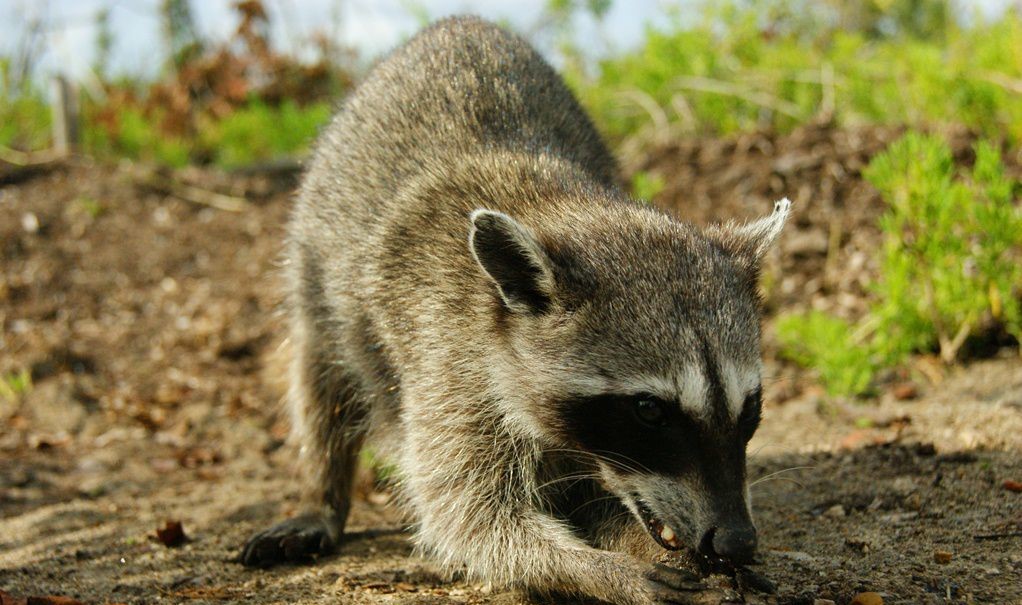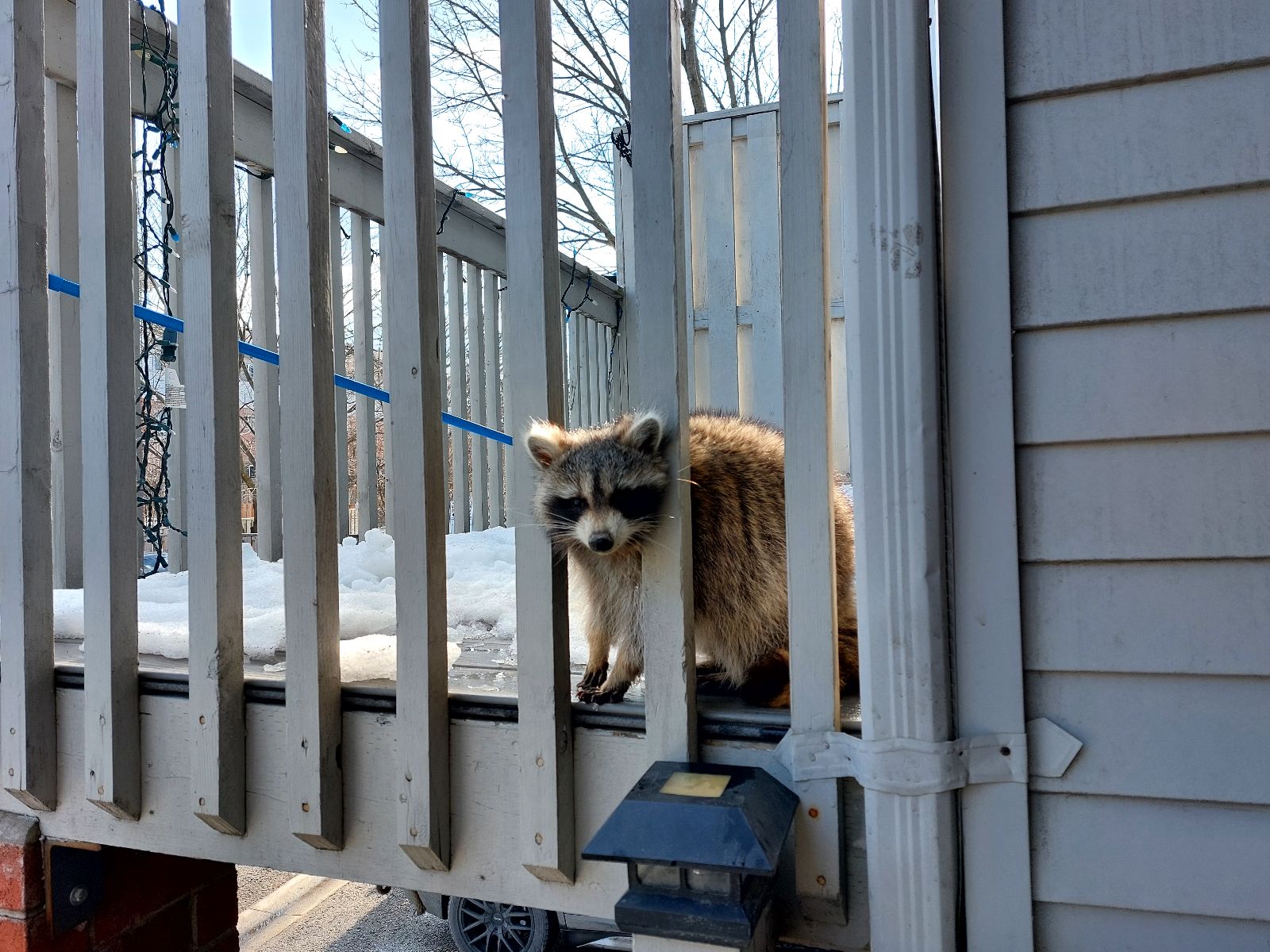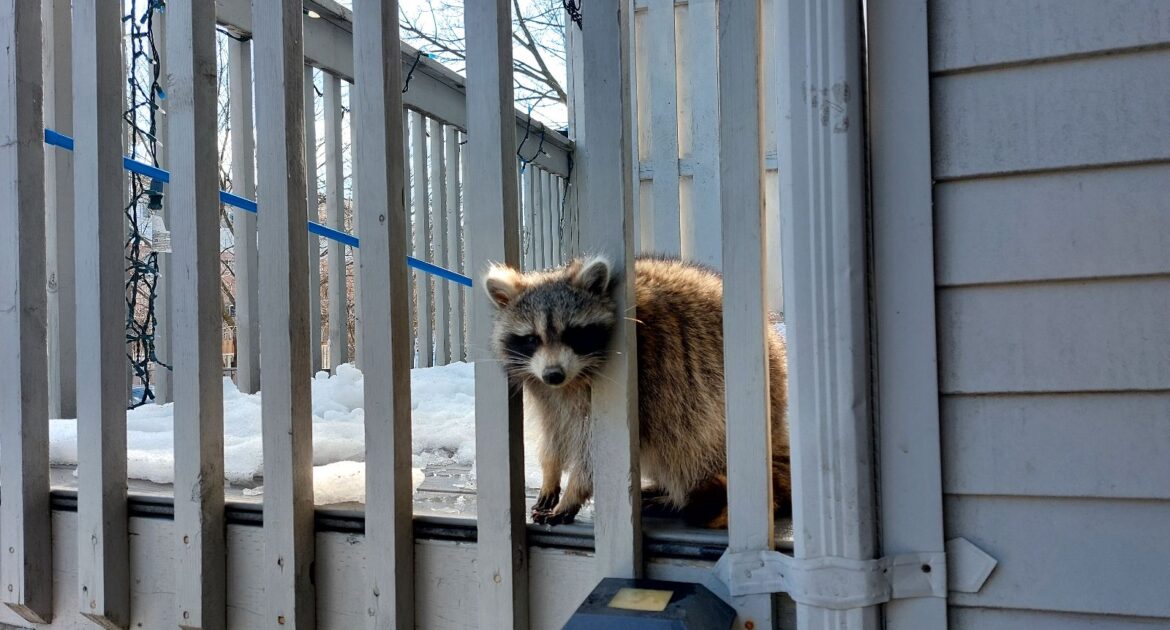Minnesota winters bring a host of challenges, especially for homeowners concerned with raccoon removal in Minneapolis. These animals are a common sight throughout the Twin Cities, and with their foraging instincts and adaptable diet, they can thrive in urban environments even when food sources are scarce. In this blog post, we will focus on understanding the feeding habits of raccoons during winter months and reveal some helpful tips on how to keep them away from your property.
From garbage cans to pet food bowls, these animals can quickly become a nuisance that homeowners must address. Understanding their habits and behavior can help prevent problems before they start. Join the wildlife control experts at Skedaddle as we explore the world of raccoons in Minneapolis, and equip you with the knowledge necessary to keep your home and property wildlife-free this winter.
Exploring The Preferred Food Sources Of Raccoons
When it comes to surviving the harsh Minneapolis winters, raccoons are survivalists, being omnivorous creatures that can eat both plants and animals. They are known for their flexibility in diet, allowing them to adapt to different environments and seasons. However, during the winter, localized food sources become significant in their survival tactics.
Raccoons’ Winter Dietary Preferences
During the winter months, snow and ice can cover the ground, limiting access to some of their favorite food sources. But don’t be fooled; raccoons are adept at finding culinary delights even in the coldest months. Their winter meal plan often includes:
- Berries and plant material: They might find leftover berries, nuts, and other plant materials not covered by snow. These provide essential carbohydrates that help keep them warm.
- Overwintering insects and grubs: Raccoons are known for their digging skills and they put these to good use to unearth insects and grubs that are hibernating underground.
- Small rodents and bird’s eggs: These resourceful creatures may also hunt small mammals or find bird’s nests for a protein-rich meal.
- Garbage and compost piles: Ever the opportunists, these animals won’t turn their noses up at easy meals. This may include leftovers from your trash can or compost pile, which can provide them a veritable feast in the winter.
Remember, they are not fussy eaters and will go for whatever is available. This adaptability is what enables them to survive in diverse environments, and it’s also a key factor in why they’re so prevalent in urban areas like Minneapolis.

Preventing Raccoons from Foraging in Your Yard
One of the most effective ways to prevent these animals from turning your property into their winter pantry is by controlling access to food. Ensuring that your trash cans are tightly sealed, refraining from leaving pet food outside, and maintaining clean yards devoid of fallen fruits or nuts can significantly reduce their interest in your property. Additionally, eliminate potential hiding spaces by regularly trimming trees and shrubs.
Understanding their feeding habits can help you identify and resolve a raccoon problem should one arise. Remember, if you’re dealing with a stubborn infestation, professional wildlife control services are your best bet. They have the training and experience to safely and humanely remove these animals from your property.
The Dangers Of Raccoon Infestations In Residential Areas
The increasing presence of raccoons in residential areas poses several serious risks that demand immediate attention. They are known for their love of chaos, wrecking everything from trash cans to entire vegetable patches. But the damage isn’t limited to only property; they can pose a direct health threat to humans and pets alike.
The Health Threat
Raccum calicivirus and Baylisascaris procyonis are two pathogens commonly associated with raccoons. The former is known to cause severe gastrointestinal symptoms in humans, while the latter is a roundworm that can lead to severe encephalitis and neurologic damage if contracted. Both diseases can be contracted through ingestion or inhalation of airborne eggs present in their feces.
The Threat to Pets
Raccoons are known to be aggressive when cornered and can attack domestic pets that get too close. Bites or scratches from animal fights can result in the spread of infectious diseases, including rabies. If you’ve pets at home, it’s doubly critical to keep these animals at bay.
Property Damage and Economic Cost
From turning over your trash cans and scattering garbage across your yard to tearing holes in your roof to create a nesting site, raccoons can be especially destructive. All these damages can result in significant financial costs due to the potentially extensive repairs needed.
Further, homeowners should also consider the economic burden of potential healthcare costs caused by raccoon-related diseases.
Minneapolis Wildlife Control: How to Keep Raccoons Away from Your Property
Keeping these wild animals from encroaching on your property may seem an uphill task, especially during the winter months when these animals are on the hunt for warm shelter and food. But it’s not impossible. By implementing a few preventive measures effectively, you can protect your home and yard from these intelligent and nimble creatures.
Proper Waste Management
Your first line of defense is making sure your property isn’t inviting the animals. This begins with proper waste management. Remember, these adaptable animals are omnivorous scavengers and find our trash a treasure trove of tantalizing meals.
- Secure your Garbage Cans: Invest in raccoon-proof lids for your trash bins. Furthermore, as an added measure, you can strap down the lids with bungee cords or store your bins in a secured area.
- Regular Trash Pickup: Regular trash pickup will prevent a build-up of residue, discouraging them from sniffing around your trash bins.
Eliminate Potential Shelter Spots
After sorting food sources, it’s vital to address potential shelter spots. These animals are not picky about where they nest. They are comfortable in trees, burrows, caves, barns, and yes, your attic or basement!
- Seal All Entry Points: Raccoons are adept climbers. They can sneak into small openings in your attic, roof soffits, or crawlspaces. Regularly inspect these areas and seal any potential entrance.
- Trim Tree Branches: Overhanging tree limbs close to your house offers a perfect gateway to your attic. So, regularly prune those branches to take away that option.
Consult with Skedaddle for Professional Wildlife Control Services
For a more guaranteed outcome and peace of mind, it can be helpful to consult a professional. Our professional team at Skedaddle are experts in wildlife control. We have the skills, experience, and tools to handle raccoon infestations. These services can include removing an existing infestation, sealing entry points, cleaning up after them, and giving advice on prevention.
Remember, dealing with raccoons should not involve causing harm or unnecessary stress to the animals. When keeping them away, the focus should be on deterrence and prevention rather than removal or extermination. After all, raccoons play a big role in our ecosystem, and understanding their behavior is the key to living harmoniously with wildlife.
Final Thoughts: Embrace A Harmonious Coexistence
When we understand raccoon behavior, we can foster environments where humans and wildlife thrive. By following the right strategies, such as proper waste management, eliminating shelter spots, and employing deterrents, we can successfully deter them without harm.
Need assistance with implementing these tactics? Don’t hesitate to consult with professionals like Skedaddle for expert wildlife control services. It’s our shared responsibility to keep Minnesota’s wildlife safe and undisturbed. Let’s all work towards a harmonious coexistence. Act now and make a difference in both your home and the wider Minneapolis environment.




